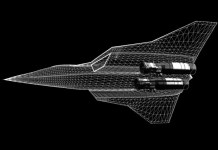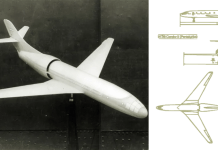OPED by Air Marshal Anil Chopra
Cross-border terrorism from Pakistan has been a scourge for India for many decades now. After Article 370 abrogation and greater control in Jammu and Kashmir, the incidents have been, albeit, on the decline.
However, the new phenomenon is the use of drones for cross-border intrusions. In the last three years, drone sightings across the international border have increased considerably.
Of the nearly 500 sightings, over 300 were in the year 2022 itself, an exponential increase from previous years. About 75 percent were in the Punjab sector, 15 percent were in Jammu, and 10 percent were in Rajasthan and Gujarat.
India’s Line of Control (LoC) and International Border (IB) with Pakistan are well-fenced, surveyed, and manned. Yet Pakistani state and non-state players are upping the ante and using technology to smuggle illegal arms, ammunition, drugs, currency, propaganda pamphlets, and other items to their supporters and operatives.
Drones are cheap and available commercially off-the-shelf and have replaced human smugglers and even terrorists in some cases, as was the case in the Jammu airfield attack a few years ago.
The US has been extensively using drone strikes against targets as part of the ‘War on Terror.’ Drones have even been used for assassination. Ayman al-Zawahiri, al-Qaeda leader, was killed in a US drone strike in early August 2022. On January 3, 2020, Qasem Soleimani, an Iranian major general, was killed by a US drone strike at Baghdad International Airport.
A significant terror plot by Pakistan’s ISI was averted by the Special Operations Group (SOG) and Jammu police after they recovered a consignment of arms and ammunition dropped by a Pakistani drone along the IB in the RS Pura Sector in Jammu district in February 2022. The future is unmanned on many counts, including use for terrorism.
An unmanned combat aerial vehicle (UCAV) can carry ordnance such as rockets, missiles, and bombs. Small bomb-laden drones can make a Kamikaze attack.
Till recently, most drones were usually under real-time human control. However, Artificial Intelligence (AI) technology now supports more significant flight and decision-making autonomy levels.
Jammu Airfield Attack
Pakistan-based Lashkar-e-Taiba (LeT) made a drone attack on IAF’s Jammu airbase on June 27, 2021. This was the first reported use of drones to attack military facilities in India.
There were twin blasts, five minutes apart, around 1:35 a.m. The first drone dropped a bomb that damaged a building when it went through the roof, while the second exploded on the open tarmac at a little distance from a parked helicopter.
There was no damage to any operational asset or loss of life. It was later understood that the target was Air Traffic Control (ATC) tower and parked IAF helicopters. The two Improvised Explosive Devices (IED) weighed five to six kilograms, with RDX as the main explosive charge. The drop was made through stored location coordinates.
The two drones had flown from across the border, a mere 14.5 kilometers away. Drones have continued to be used in Punjab, Rajasthan, and Jammu & Kashmir sectors for Intelligence, Surveillance, and Reconnaissance (ISR). They are also used for smuggling drugs and small arms. The drones were assembled from Chinese-origin kits and thus increased deniability.
Drones, New Dimension To Border Security
For long unmanned aerial vehicles (UAV) have been used for border surveillance and often through incursions into adversary’s territory. Drones are also used for intelligence gathering, especially for military and BSF installations near the border.
Drones are small and have low visual, noise, smoke, and infrared (IR) signatures. They can fly ultra-low or at high altitudes, making it difficult to detect, intercept and neutralize.
Most conventional air defense radars cannot detect them. A few dedicated bird detection avian radars at airports monitor bird activity within the airfield zone and near the approach and take-off path.
Such radars will pick up drones, but it is not affordable to position such radars across the entire border. Sensitive IR sensors are required in large numbers at a considerable cost to detect the heat signature of drones. Small size and nearly no smoke signature means late visual detection. Even the drone sound can be heard very late.
Drones could be autonomous or remotely controlled and, because these are sourced from the open market, enable deniability. Drones could travel a few 100 kilometers deep, carrying a significant quantity of contraband payload. The types of cargo captured from the downed drones included substantial amounts of heroin, opium, pistols and revolvers, ammunition, detonators, and other explosives. More recently, they have been bringing even currency.
Pakistani Drone Production Ecosystem
For years, Pakistan had been pushing the US to allow it to acquire the MQ-1 Predator, the primary UCAV system the US used as a strike platform. However, such requests were denied amid fear of technology proliferation.
Pakistan’s National Engineering and Scientific Commission (NESCOM) and the Pakistan Air Force (PAF) jointly began developing its own Burraq UCAV. The initial variants were for surveillance and intelligence gathering.
In 2015, they had the first UCAV variant. Pakistan borrowed ideas from the Chinese CASC Rainbow CH-3A UCAV and may have received assistance, too. The Shahpar II is a UCAV built by Global Industrial Defence Solutions of Pakistan. It is currently in production following the completion of a test and qualification phase. It reportedly can fire missiles at both stationary and moving targets.
Pakistan is working closely with Turkey on Bayraktar TB2, medium altitude long endurance (MALE) drones for offensive and air defense use. They showcased these at the Pakistan Air Force (PAF) day event. Satellite images revealed the presence of one Bayraktar TB2 at PAF’s Murid Airbase. Pakistan has thus raced ahead of India in indigenous MALE and UCAVs.
Pakistan also signed a contract with Turkey for the co-production of ANKA UCAV. Pakistan also acquired CH-4 and Wing Long UCAVs from China. The Pakistan Navy already operates several UAVs, such as Scan Eagle and Uqab, for surveillance.
The SATUMA Jasoos II is another indigenous drone in the PAF inventory, fulfilling dual purposes of ISR and training. The Pakistan military has claimed to have eliminated three high-profile Tehrik-i-Taliban Pakistan (TTP) terrorists using its indigenous Burraq combat drone during an operation in North Waziristan’s Shawal Valley.
Pakistan’s Drone Infiltration Mechanism
Pakistan is following an all-of-the-nation approach with many government agencies, the armed forces, and Inter-Services Intelligence (ISI) supporting the covert operations. Their border security force, Pakistani Rangers, has reportedly set up drone centers to help drone crossings by smugglers and terrorists to send arms and drugs into India.
Pakistan’s focus has been much higher in Ferozepur and Amritsar sectors. The BSF has seized about 1,150 kg of drugs at the Punjab border in the last three years. Also found on the intercepted drones were some AK series assault rifles, pistols, MP4 carbines, carbine magazines, high explosive grenades, as well as narcotics.
Pakistan’s Chinese Off-The-Shelf Drones
Most Pakistani drones are of Chinese origin. Da-Jiang Innovations (DJI), Shenzhen, is one of the major drone manufacturers. Several Chinese state-owned entities back it.
DJI manufactures commercial drones for aerial photography and videography. DJI accounts for around 70 percent of the world’s consumer drone market. The company’s products have also been used by militaries and police forces, as well as terrorist groups.
DJI drones have been extensively used in Ukraine. These drones could be of different sizes and have significant payload capacities. Some of those caught on the Indian border include the DJI Matrice 300 Quadcopter with RTK (Real-Time Kinematic) drone.
It can have a maximum take-off weight of nine kg, fly at 80 km/h, and have an endurance of 55 minutes on fully charged batteries. It can fly autonomously on pre-fed waypoints and transmit live mission recordings. It costs nearly INR 1,500,000.
The payload could be three to four kilograms. The operator in Pakistan could control the payload drop based on video feed from the drone. Alternatively, it could fly autonomously. The US government has prohibited DJI products because the drone is known to transmit all data to parent organizations in China.
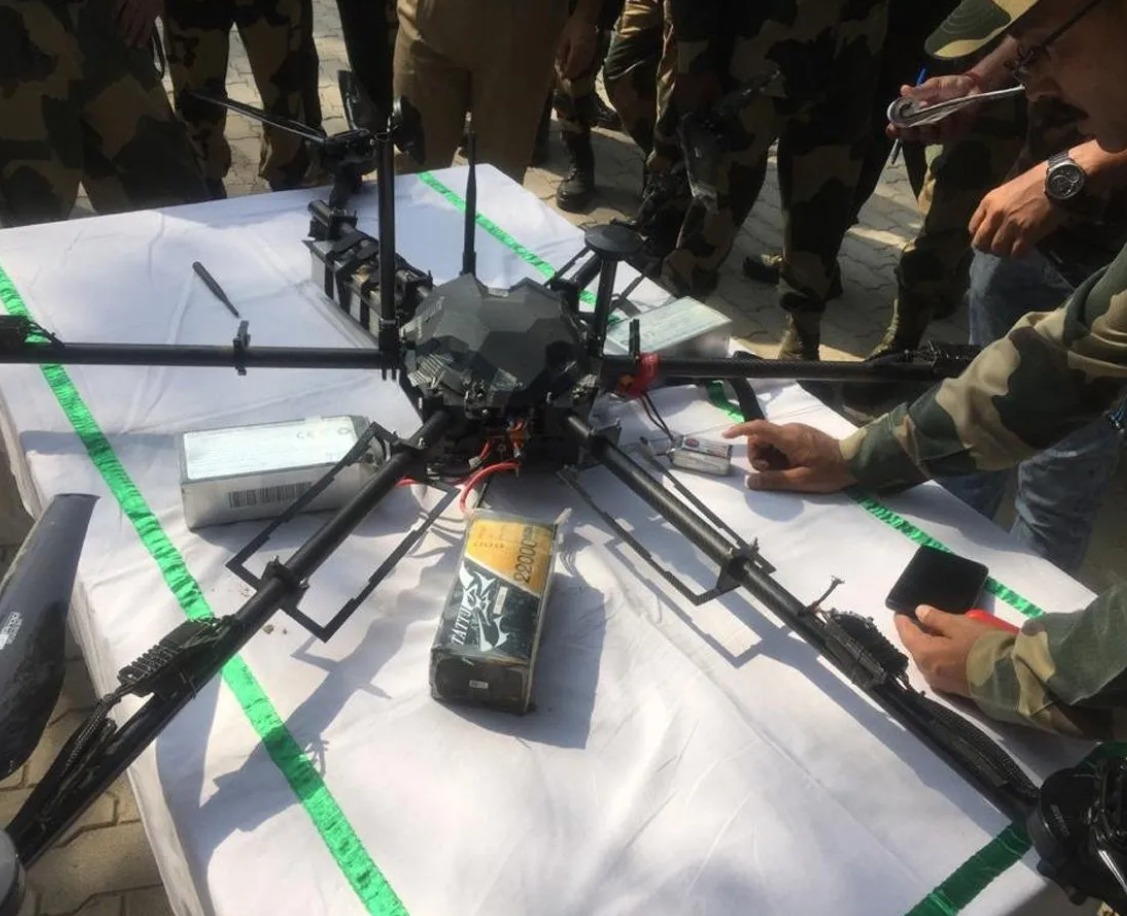
Forensic Analysis Of Downed Pakistani Drones
Most Pakistani downed drones give tell-tale signs. Knowing the flight path, the number of flights done recently, the quality of onboard equipment and sensors, and assessing their vulnerabilities is possible.
Also, it is possible to determine the communication equipment and frequencies, which could be jammed later. Sometimes, it is possible to burst into the recipient terrorist networks and find terror-related hardware, arms and ammunition, narcotics, and foreign currency. India’s National Investigation Agency (NIA) has monitored and investigated all incidents.
Anti-Drone Measures
Large UAVs and Kamikaze drones have been extensively used in the Ukraine War and earlier in the Azerbaijan-Armenia conflicts. These have become more sophisticated, accurate, and lethal. Security establishments worldwide are working on anti-drone measures and systems that include hard and soft kill.
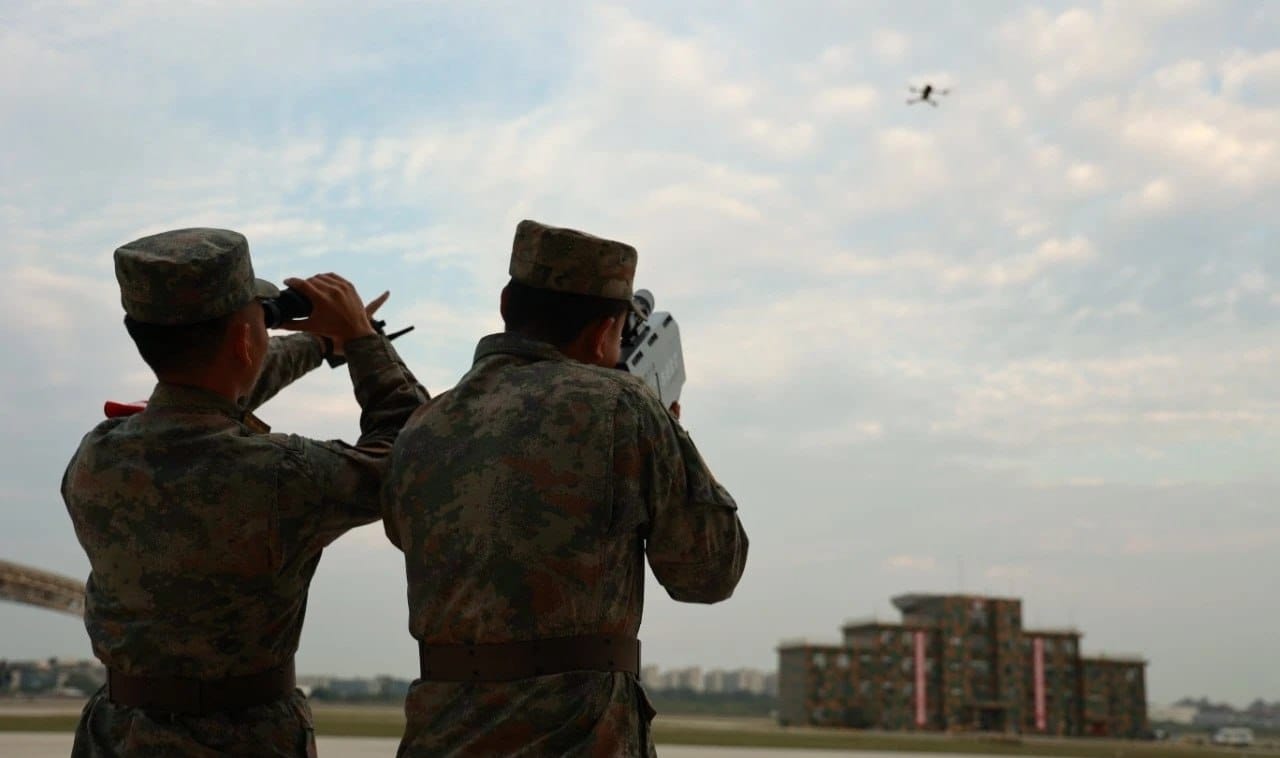
The large UAVs will be tackled by the air defense units of the armed forces using missiles and air defense guns. The larger drones can also be shot down by fighter aircraft or UAVs with air-to-air ability. Attack helicopters like the recently inducted Light Combat Helicopter (LCH) ‘Prachand‘ also have air combat missiles.
BSF or other border guarding force sniper rifles can shoot the smaller drones. Special nets can be fired from hand-held guns that will entangle the drone rotors and bring them down. The GPS signal of the drone can be jammed and send it off track or astray.
Also, drone communication links can be jammed. Special laser-beam firing guns can burn the drone electronics or dazzle the optical systems. There are cyber means to take control of the drone and bring it down at a place of own choosing, as was done by the Russians in Syria.
It is a good achievement even if the drone is forced to drop its load through counter-drone action. Even the drone warhead could be exploded in the air. With more drones being flown in a swarm, the complexity of neutralizing would increase.
Drone Ecosystem In India
Indian armed forces are already flying Israeli Heron and Searcher UAVs and Harpy and Harop UCAVs. India will soon have MQ-9 Reaper or Predator B UCAVs from General Atomics of the USA.
For a long time, DRDO’s Aeronautical Development Establishment (ADE) was responsible for UAV development in India. Lakshya and Nishant had little success. Indian DRDO’s Stealth UCAV Ghatak project is being accelerated. The first flight of a scaled-down test-bed flying wing was carried out in July 2022. It may be inducted by 2026.
Tapas MALE is also progressing well. DRDO must find private production partners for UAVs. The Adani Group is making the Israeli Hermes UAVs in India through a joint venture with Elbit Systems at Hyderabad.
Meanwhile, the private sector has been rightly galvanized for mid-sized drones. Over 100 drone start-ups are operating, and many have started getting significant orders from armed forces and other security agencies. Indian Air Force’s ‘Mehar Baba’ competition helped identify drone and drone swarm start-ups.
Bengaluru-based start-up NewSpace Research and Tech is working with Hindustan Aeronautics Limited (HAL) to develop a futuristic air-launched swarm drone system as part of the Manned-Unmanned-Teaming project called the Combat Air Teaming System.
As per the Drone Federation of India, the manufacturing of drones and related systems is happening in India, but critical components like batteries, motors, sensors, semiconductors, GPS, and cameras are still being outsourced. Select countries have developed mass production capabilities against aggregated demand for such components. India needs to get into such mass production.
Anti-Drone Actions In India
Notwithstanding the sporadic successes of shooting down a few intruding Pakistani drones, it must be understood that the initiative of timing and place is with the aggressor.
Considering that India’s border with Pakistan and China is large, we have to be selective in providing anti-drone means to the border guarding forces.
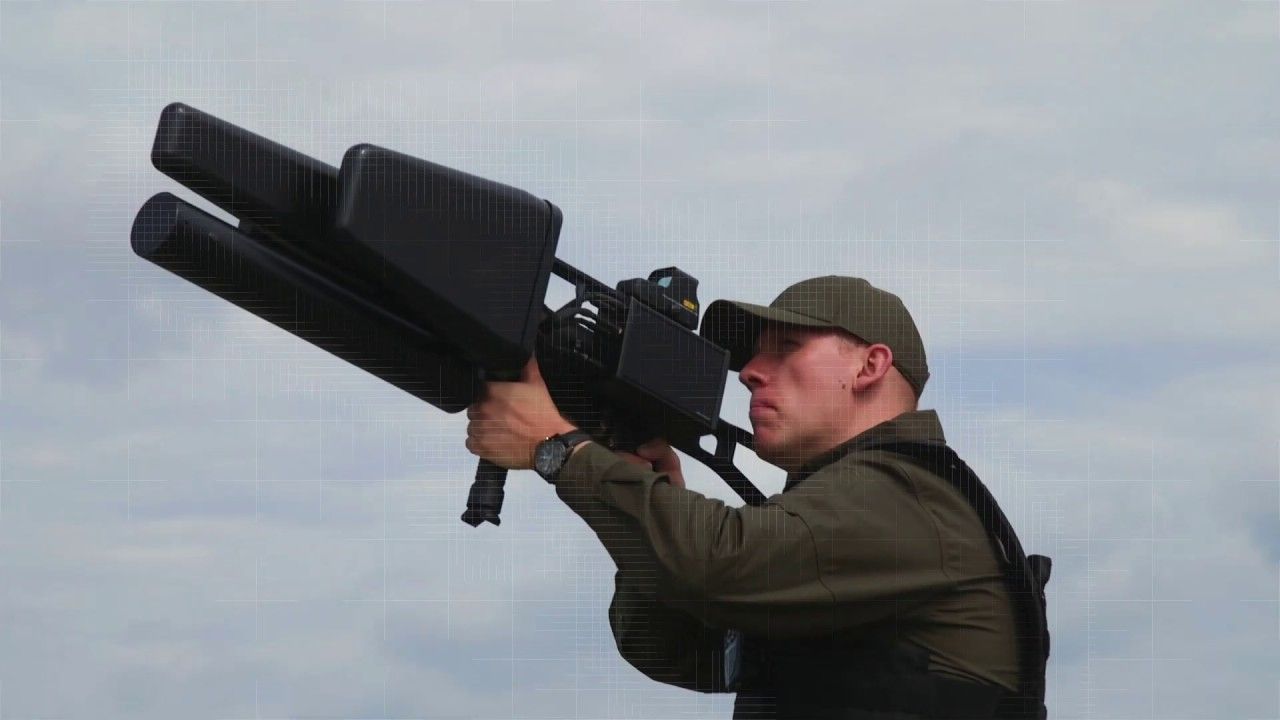
Also, human intelligence (HUMINT) and other means must support anti-drone actions. Indian Army and BSF are acquiring large numbers of drones, some of which could be used for surveillance of borders to identify incursions timely. It all requires inter-agency coordination in India.
The BSF conducts round-the-clock surveillance through patrolling, checkpoints, and observation posts. Floodlighting of the fence enhances visibility during the night. India has invested in radars for detection.
Indian security forces also use drones for anti-drone operations. BSF has installed anti-drone systems using integrated surveillance technology equipped with cameras, sensors, and alarms with a command-and-control system at more sensitive points on the Punjab border.
They have also created ‘drone hunting teams’ to shoot down enemy UAVs. The success rate in downing drones is going up. BSF conducts awareness campaigns among the public in border areas to sensitize them about UAVs/drones. With many drone start-ups in India, anti-drone systems can be acquired easily in more significant numbers.
Way Ahead For India
Pakistan’s support of radical Islamic elements and the technological backing of China enhances the terror threat pan-India that sees the risk of drones being used for more lethal chemical or biological forms of terrorism.
The Indian government is giving the drone ecosystem in India a very high priority. India must promote more research and development in drones and unmanned systems to remain globally relevant.
As India becomes drone-friendly, there is a need to strengthen regulation and control over drones. Air defense procedures have to be evolved. More no-fly zones may be designated to make vital installations safer.
Sensors and weapons against drones would one day be integrated like the IAF’s Integrated Air Command and Control System (IACCS). Inter-ministerial coordination would be significant with the proliferation of drones within the country.
Local police and the Intelligence Bureau (IB) must monitor drones more closely. The police and security personnel should be educated and trained to respond to drone transgressions.
India has to prepare to take on drone swarms. An anti-drone force may be created one day. The national drone policy would need continuous evolvement, using global interactions and inputs. To counter the risk of embedded malware in drone electronic sensors, there is a need for greater indigenization of both platforms and sensors.
Drones are the future, and India must follow a facilitative proactive approach yet be conscious of security implications and prepare for it.
- Air Marshal Anil Chopra (Retired) is an Indian Air Force veteran fighter test pilot and is the Center for Air Power Studies Director-General in New Delhi. He has been decorated with gallantry and distinguished service medals while serving in the IAF for 40 years. He tweets @Chopsyturvey
- Follow EurAsian Times on Google News



